How to Choose The Best Ski Goggles That Suit Your Budget?
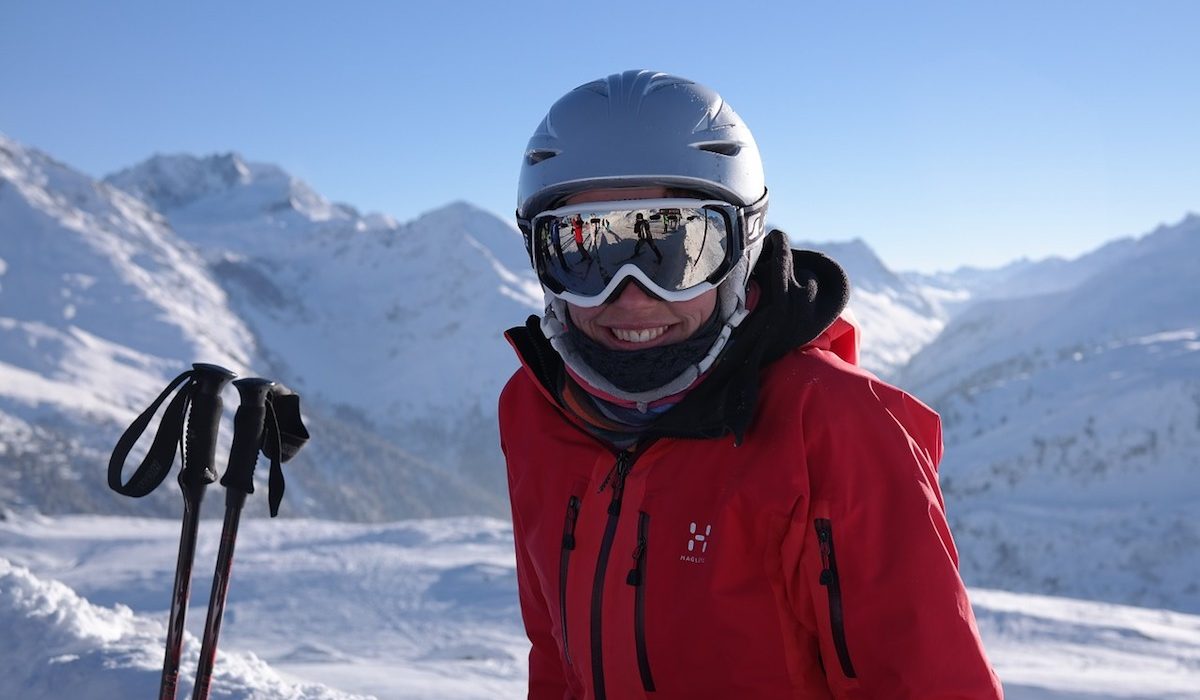
Picking ski goggles for the right terrain, conditions, and even budget can be overwhelming. With hundreds of this eyewear on the market, it can be tricky to know where to begin. However, narrowing down your options becomes easier when you understand what you need in ski goggles. Aside from that, having a better understanding of the important features helps. This allows you to decide which features you need and those you can do without.
To help you decide, here are tips on buying ski goggles that fit your budget.
Why Do You Need To Wear Ski Goggles?

Photo by Adobe Stock
You may be asking yourself why you need to wear ski goggles. Won’t a nice pair of sunglasses suffice? Ski goggles are not just a cool ski gear that completes your look. Wearing one protects not only your eyes but also your face in different weather conditions. It’s essential to give assurance against the UV rays, ice, snow, rain, wind, or any unpredicted injuries. Most of the time, they come in different shapes, sizes, colors, and features to ensure they fit comfortably and stay in place even when you’re skiing in rough conditions. While sunglasses do protect you from UV rays, but they aren’t made specifically for your ski adventures.
It’s true that your ability to see well while skiing makes or breaks your time on the slopes. So, it’s always a good idea to spend a little more on the better quality of skiing gear. Of course, that includes a good pair of ski google. Because of the latest technology, some skiing eyewear can also prevent fogging.
The Different Types of Ski Lenses

Photo by Adobe Stock
The most important feature you need to check when choosing the best ski goggles is the lenses. All other features of ski goggles are mainly for support and style. Whether you’re choosing between snowboarding goggles or ski goggles, tinted ones, or non-tinted, the quality of your selected eyewear will still depend on its lens.
Over the years, innovative technology has been incorporated in this protective eyewear to improve their performance. New technology, however, also drives up the price for ski goggles.
Here are the type of lenses commonly found in ski goggles.
- Polarized lenses: This type of lens reduces the amount of sun and snow glare. Less glare means less eye fatigue.
- Photochromic lenses: Photochromic lenses are the most versatile lens. Depending on the light conditions, this lens automatically lightens or darkens.
- Mirrored lenses: Also called Chrome lenses, this lens type blocks sunlight through its mirrored coating. It also helps reduce glare. Take note that since this lens allows less light, you’ll have less visibility on overcast days.
- Non-mirrored lenses: Because this lens does not have reflective properties, it allows light to go through the lens. Non-mirrored lenses work well on cloudy days.
The Visible Light Transmission Guide (VLT)
An excellent place to start in deciding which lenses to purchase is the visible light transmission (VLT). The higher the VLT percentage is, the lighter the lens tint will be. Higher VLT percentage lenses allow for more light to travel through the lens and into your eyes. Conversely, lenses with a lower VLT percentage will have a dark tint and prevent more light from coming through your eyes. This means that for a cloudy day, you will need to have lenses with a high VLT percentage, and on sunny days, low VLT percentage lenses will do just fine.
Study the chart below to see what your lenses’ VLT percentage should be for your next trip:
|
VLT |
Conditions |
Weather |
|
3-8% |
Very strong light |
(Glacier) Blue Bird |
|
9-18% |
Strong light |
Sunny, a little bit cloudy |
|
19-43% |
Moderate light |
Cloudy, changing conditions |
|
44-80% |
Low light |
Flat light, snowfall |
|
81-100% |
Very low light |
Snowfall, artificial light |
What Are The Difference Between Cylindrical vs. Spherical Ski Lens?
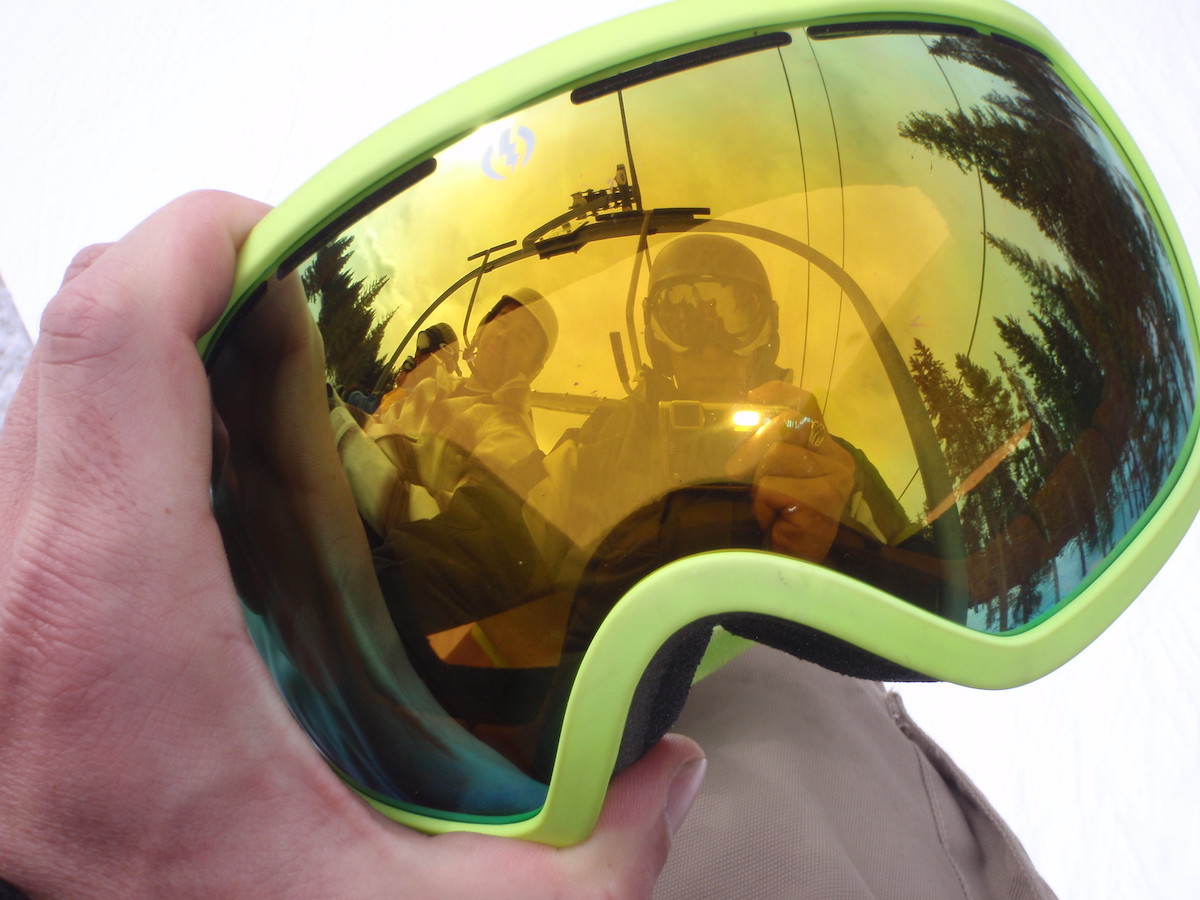
Photo by Heath Alseike from Flickr
Lens shape isn’t just a preference because each form serves a different purpose and provides distinct benefits.
- Cylindrical: Cylindrical lenses are flat on the horizontal axis and curved on the vertical axis. Because of their shape, these lenses don’t offer the best peripheral view. They don’t absorb as much sunshine as its spherical counterpart. However, ski goggles with these lenses are one of the most affordable in the market.
- Spherical: Spherical goggle lenses, on the other hand, are curved both horizontally and vertically around your face. This gives the goggles a bubbled look when worn. Beyond its style, spherical lenses offer significant advantages, such as better peripheral vision, reduced glare, less fogging, and less distortion. However, ski goggles with spherical lenses are very expensive.
What Color of Tints Should I Choose for A Ski Goggle?
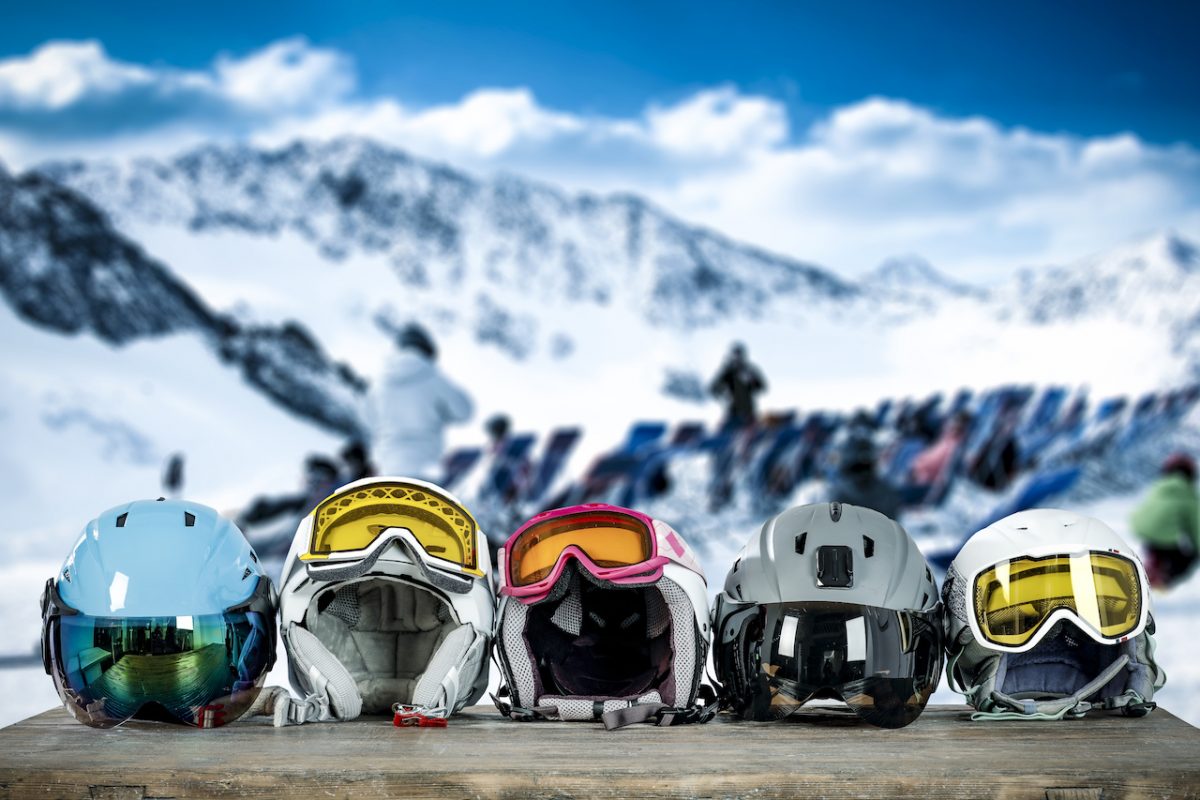
Photo by Adobe Stock
Lens tinting is often a subject for debate among skiers. While non-tinted goggles are more affordable, the few dollars spent for tinted goggles can be worth it. Lens tints are not just for aesthetic purposes. They allow your goggles to adapt well in various light conditions.
The color of lens tints are also telling of their performance in various light conditions:
- Clear: Works best for low-light conditions such as night skiing
- Pink/rose: Ideal for low-to-mid light conditions and partly cloudy or overcast days
- Yellow/gold: Best for flat light and snowy days
- Amber/orange: Great for dark conditions, also works on partly cloudy or sunny days
- Black: Excellent for very bright days
- Brown/bronze: Works best in bright conditions when the sun is glaring
- Red: Ideal for medium to bright light
- Green: Works great in partly cloudy conditions, as well as sunny days
- Blue: Can work in low light, cuts glare and mirrored blue ski goggle lenses work well in bright light
- Violet/purple: Excellent in low-to-mid light conditions
- Photochromic: Photochromic lenses darken or lighten depending on conditions
There’s no need to worry about harmful UV rays. Almost all ski goggles produced today offer 100% UV protection against all 3 types of ultraviolet rays–UVA, UVB, and UVC. Even ski goggles on the cheaper end of the spectrum offer this feature. Always remember that UV rays can bounce off the snow, even when the weather is downcast. UV intensity also increases with altitude. Protecting your eyes from harmful UV rays will prevent eye fatigue and retinal damage.
Should I Consider the Ski Goggles Lens Rim?
Lens rims do not just secure your lenses in place. They also affect your field of view. If you’re considering your rims, know that full-frames are cheaper, while semi-frameless to frameless goggles cost more.
- Full-framed: These glasses’ frames fully surround the lens, and the entire goggle structure is visible.
- Semi-frameless: The frame surrounds only some parts of the lens, and some parts of the frame are visible on the sides of the lenses.
- Frameless: The lens covers the goggle structure, and the field of vision is maximized.
How to Choose An Ideal Ski Goggle Size And Fit?
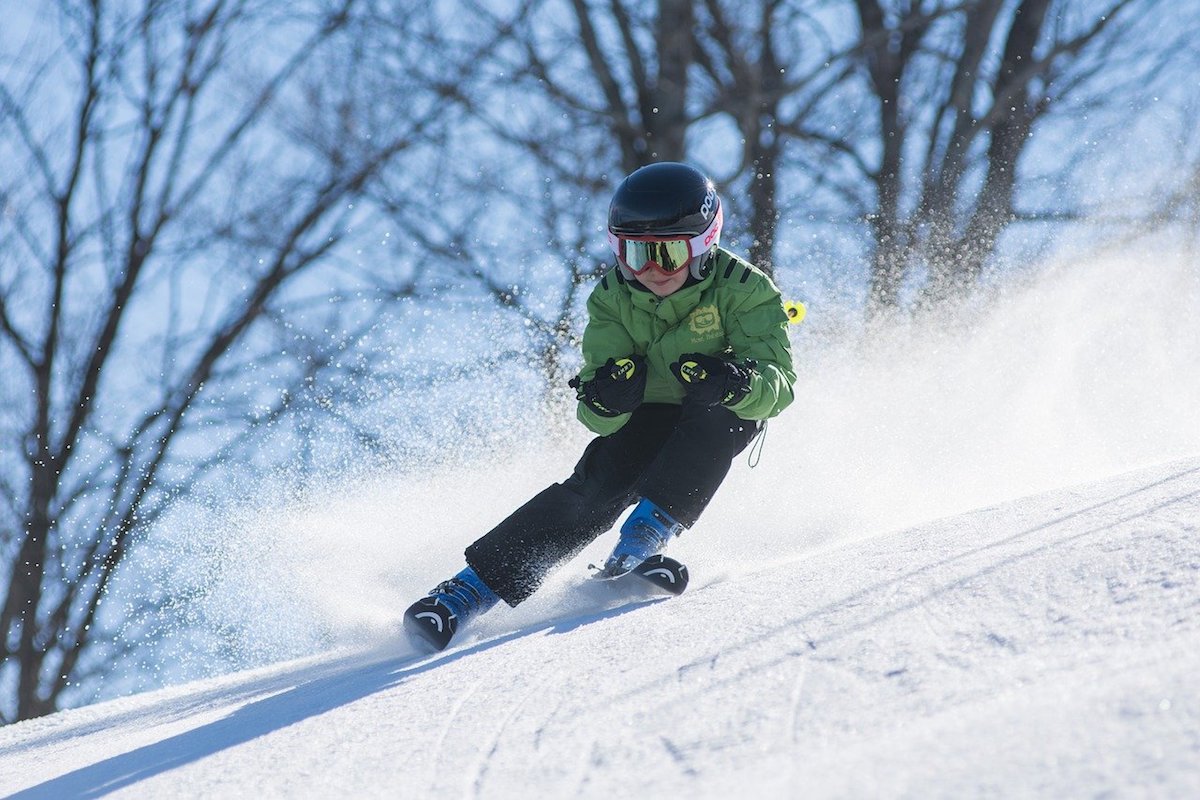
Photo by Pexels from Pixabay
When buying ski goggles, you should always check a goggles size guide. Using ski goggles smaller than your face will be painful, and bigger ones will not stay securely on your face when you move in the snow. Luckily, ski goggles are offered in a variety of sizes and fits. There’s something in store for children and adults, as well as customized fits for women and Asians.
Another consideration in buying goggles is its ability to fit within a ski helmet. Ski goggles that fit well on any ski helmet type are more expensive than regular skiing goggles.
- Size: Choosing the right size means finding the best one that fits your face comfortably. Besides that, the size determines how much coverage you prefer. Larger goggles offer a broader field of view and more warmth. Meanwhile, smaller ones will snugly fit those with smaller faces.
- Helmet compatibility: Ski helmets are also important as an added protection when skiing. It’s ideal to purchase a helmet and ski goggles from the same brand to guarantee that both gears can be worn together.
- Over the glasses: Aside from helmet compatibility, some also look for goggles to accommodate their prescription glasses. If you need to wear prescription glasses while skiing, look for ski goggles labeled OTG, or “over the glasses.”
Padding
Whether you are a professional skier or an occasional one, comfort should be part of your things to consider in picking ski goggles. Great ski goggles are well-foamed and padded to ensure your comfort and protection against impact. Expensive brands usually have more than one layer of foam for premium support. If you intend to ski regularly, invest in well-padded ski goggles.
Ventilation
Besides padding, ventilation is also a critical ski goggle feature. A ski goggles’ degree of ventilation is often what separates the budget goggles from premium ones. Some goggles have additional vents to allow air to flow smoothly, preventing fog buildup. If your budget allows the added expense, choose ski goggles with excellent ventilation.
Other Great Goggle Features
While these are not a priority, it’s nice to consider these features especially if budget is not an issue.
- Scratch-resistance: Some ski goggles are built with scratch-resistant coating. This helps prevent scratches and helps your goggles last longer.
- Nose guard: Not all ski goggles have this, but this is great if you want added support and protection for your nose. This feature is essential, especially during falls when skiing. Take note, however, that nose guards can contribute to fogging. Think about your skiing style before purchasing a ski goggle with a nose guard.
- Lens change system: A secure lens change system allows you to change between lenses for different conditions. Some brands have sliders or buttons, while others have magnets and pins. Some also allow you to simply peel back the lenses. Before getting ski goggles with two lenses, check the lens change system and consider how easy or hard it is for you to swap between lenses.
- Articulated hinges or outriggers: If you’re going to ski for long hours or on a regular basis, you need well-fitting ski goggles. How the strap is attached to the goggles makes a big difference when it comes to fit and comfort. Having articulated hinges on your goggles allows the pressure of the fit to be well-distributed across your face. Ski goggles that have a movable plastic hinge are more flexible than goggles directly attached to the frame.
- Built-in camera and GPS: Ski goggles are becoming increasingly advanced in technology these days. Now, some brands offer a built-in camera and GPS for your goggles. These integrated features allow you to snap photos easily when skiing and lets you track your speed, location, and altitude. Of course, since these goggles are more technologically advanced, they’re more expensive than your ordinary ski goggles.
Recommended Ski Goggles For Every Budget
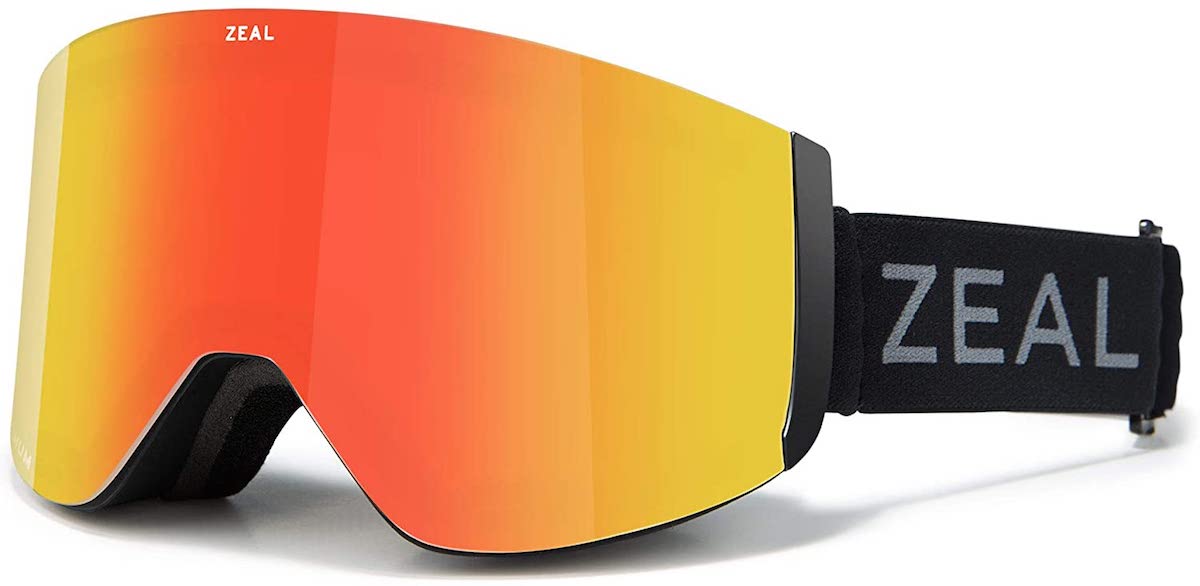
Photo from Amazon
A question on every skier’s mind when shopping for this specific skiing gear is, “How much should I spend on goggles?” The answer depends mostly on your budget and the type of skiing activity you’ll be doing. If you don’t intend to do it professionally or regularly, we don’t recommend spending a lot on protective skiing eyewear. There are reasonably priced choices for occasional skiers in a budget. If your outfit’s look is more of a concern, there are also a lot of goggles that are stylish yet durable.
Suggestions for Above $250
- Zeal Hatchet: Has a cylindrical lens framed with a rimless design, has fast and easy lens swap system
- Anon M4 Toric MFI: Excellent optics, incredible helmet-to-goggle fit
Suggestions for $250 and Under
- Anon M2 Snow Goggles: Lightweight with wall-to-wall vision, allows for quick and smooth lens swap
- Julbo Starwind Ski Goggles: Perfect for small to medium faces, boasts a photochromatic lens
Suggestions for $200 and Under
- SMITH I/OS ChromaPop Ski Goggles: An excellent choice for smaller faces, designed with a quality lens, comes with 2 lenses
- Scott LCG Ski Goggles: Designed with a spherical lens for great visibility, easy to swap interchangeable lens, perfect for medium to large faces
Suggestions for $150 and Under
- SMITH Squad XL ChromaPop Ski Goggles: Cylindrical lens for clear and wide views
- Spy Ace Happy Lens Ski Goggles: Built with extra foam for superior comfort, has high-performing color enhancement and UV ray protection
General Guide When Buying Ski Goggles
When picking ski goggles, keep your preferred skiing activity in mind. If you only plan to visit the slopes for an occasional adventure, don’t spend so much on this skiing gear. There are plenty of budget ski goggles that provide all the essential features you will need. However, if you intend to ski regularly, it won’t hurt to go all out. In ski goggles, you get what you pay for. Many premium brands offer excellent features and technological advancements for you to have the best skiing experience.
Aside from that, the goggle size and fit can make or break your skiing experience. You can forgo other features to save on cost, but do not sacrifice the goggles’ fit on your face.
The Slopes Are Waiting!
If sliding down the slopes of ski resorts is in your plans, you better pack the proper snow sports equipment. Aside from boots and jackets, ski goggles are essential to make your skiing experience safe and comfortable. Out of the many options on the market, take time to research various goggle features before buying. The cost of the goggles is also something to consider. Don’t worry, though. There is extensive goggles selection for every ski level and skier budget out there.

